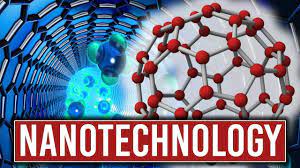Introduction
Nanotechnology, the manipulation of matter at the nanoscale, has emerged as a groundbreaking field with transformative implications across various industries. Operating at dimensions thousands of times smaller than a human hair, nanotechnology explores the unique properties of materials at the nanoscale. This article delves into the world of nanotechnology, examining its applications, impact, and the potential it holds for shaping the future across diverse domains.
**1. Fundamentals of Nanotechnology
Nanotechnology operates at the nanometer scale, where one nanometer equals one billionth of a meter. At this scale, materials exhibit novel properties and behaviors due to quantum effects and increased surface area. Scientists and engineers leverage these characteristics to design and manipulate materials with unprecedented precision.
**2. Healthcare Innovations
In the realm of healthcare, nanotechnology has ushered in a new era of diagnostics, drug delivery, and treatment. Nanoparticles designed for targeted drug delivery enhance the efficacy of medications while minimizing side effects. Nanoscale sensors enable early detection of diseases at the molecular level, providing insights for timely and personalized medical interventions.
**3. Advanced Materials and Manufacturing
Nanotechnology has revolutionized materials science and manufacturing. Nanocomposites, composed of materials at the nanoscale, exhibit enhanced strength, conductivity, and other properties. These advanced materials find applications in aerospace, electronics, and energy storage, paving the way for more efficient and durable products.
**4. Electronics and Computing
The miniaturization of electronic components is a hallmark of nanotechnology in the field of electronics. The continued shrinking of transistors and circuits allows for the development of smaller, faster, and more energy-efficient devices. Nanoscale components contribute to the evolution of computing power and the development of quantum computing, promising unprecedented computational capabilities.
**5. Energy Harvesting and Storage
Nanotechnology plays a crucial role in addressing energy challenges by optimizing energy harvesting and storage solutions. Nanomaterials enhance the efficiency of solar cells, making renewable energy sources more viable. Nanoscale structures in batteries and capacitors increase energy storage capacity and facilitate faster charging, driving advancements in electric vehicles and portable electronics.
**6. Environmental Remediation
Nanotechnology offers innovative solutions for environmental remediation and pollution control. Nanomaterials can be designed to absorb and neutralize pollutants, purify water, and facilitate the remediation of contaminated soil. These applications contribute to sustainable environmental practices and the mitigation of ecological impacts.
**7. Food and Agriculture
In agriculture, nanotechnology presents opportunities for precision farming, pest control, and food safety. Nanoscale sensors can monitor soil health and crop conditions, optimizing resource utilization. Nanomaterials can be employed for targeted delivery of fertilizers and pesticides, minimizing environmental impact while maximizing crop yields.
**8. Challenges and Ethical Considerations
While the potential benefits of nanotechnology are vast, ethical considerations and potential risks must be acknowledged. Concerns include the environmental impact of nanomaterials, potential health effects, and the ethical implications of manipulating matter at such a fundamental level. Responsible and transparent development practices are crucial to navigating these challenges.
Future Trends in Nanotechnology
The trajectory of nanotechnology points toward continued innovation and integration into diverse sectors. Anticipated trends include advancements in nanomedicine for personalized healthcare, the development of nanoscale robotics for targeted interventions, and the exploration of new materials with unprecedented properties. The future promises a world where nanotechnology continues to push the boundaries of what is possible across scientific, industrial, and medical domains.
Conclusion
Nanotechnology exemplifies the adage that big things come in small packages. Operating at the nanoscale, this field unlocks the potential of materials and devices with profound implications for various industries. From healthcare breakthroughs to environmental solutions and advanced materials, nanotechnology stands as a testament to human ingenuity in manipulating matter at the smallest scales. As research and development in nanotechnology progress, the impact on our daily lives and the possibilities for addressing global challenges continue to expand, making nanotechnology a force with a small scale but a truly monumental impact on the world.

